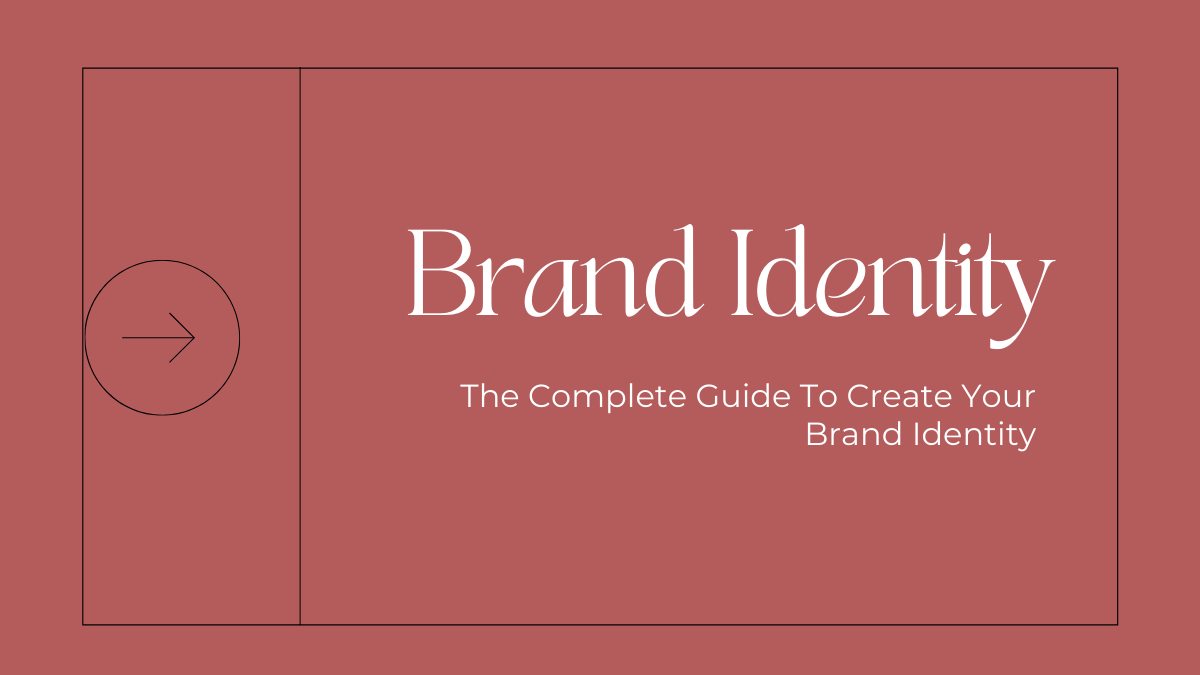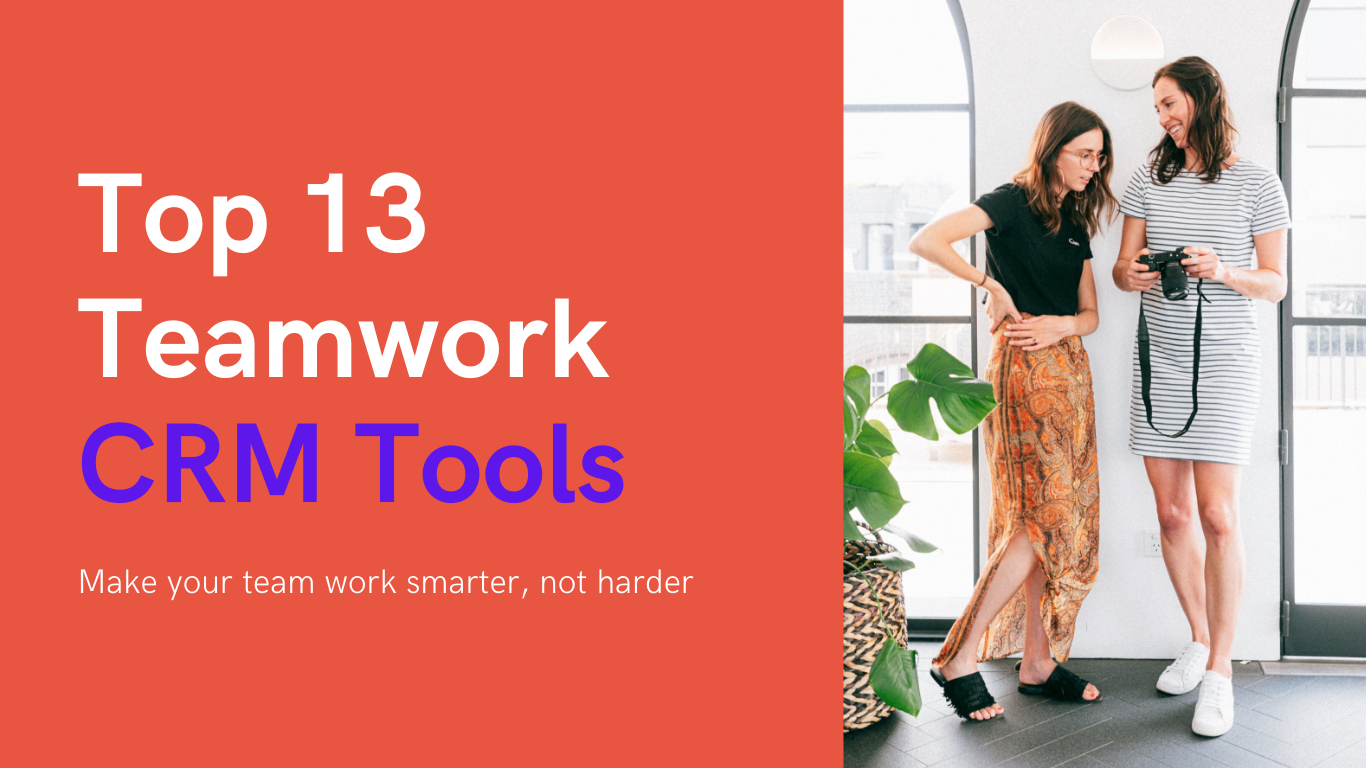
Building a solid brand identity takes time. It does not happen right away. A brand can be something that you see on a building, or it can be the name of a company. A logo is just one part of a brand. It is an image or symbol that helps people to remember the company. Getting a logo is one small step in building your brand.
There are so many businesses in the world. It is hard to be different, to stand out. So it would help if you had a good name for your business -a brand- that will make people remember you.
A brand is what people think about when they think about your product. So it’s essential to get the brand right, so it represents everything you want to say. You can’t just give it a name and put it on everything.
Initially, the word “brand” was used for how cattle ranchers marked their cows. But now, it also means more than just a name or symbol.
Your brand is what you are. It’s the type of product that your business makes.
What is the definition of brand identity?

A brand identity consists of what your business says, how they communicate their product, and the emotions you want people to feel when dealing with them. It’s like a dynamic personality for any company that somehow promises its customers happiness or empowerment.
A good example would be Nike – because we know precisely what these shoes mean for athletes!
Your brand is the feeling people get from your identity. It has eight parts:
- Company name
- Logo
- Tagline
- Color Palette
- Typography
- Graphical Elements
- Imagery
- Voice
A brand identity is how people see your company. It includes everything from its trademark, name, and communications to how it looks in visual media or customers’ eyes when they see you for themselves.
Each element must work together seamlessly so people can quickly identify who you are as a business without any confusion on their end – which means consistency across all channels will make them feel confident about where this goes next time around!
When most people talk about brand identity, they talk about how your company looks. So for purposes in this post, we’ll be focusing on that aspect and how it can affect customer perception/buyer behavior for both good or bad results!
Customers remember your product even after they’ve bought it. Your company’s brand is not just about what products or services you provide. It also communicates who you are as a person. Therefore, a company needs to be able to tell people what they do.
What Are Your Goals for a Brand Identity?
A strong brand presence is significant. It’s not just about making attractive packaging; it’s all about effectively telling your brand story. Design is a powerful tool that may help you change how people interact with your business in three significant ways.
- Differentiation: How can you differentiate yourself in a crowded market? Your brand identity may play a significant role. Creating a consistent, coherent presentation that emphasizes your product’s distinctiveness is the key to success.
- Connection: When you tell people who you are, it is easier for them to like you.
- Experience: Everything you do is like your brand. You need to be consistent, so people will know what you are. To show this, use the same things across all of your marketing efforts. A strong identity is essential to know who you are and what they can expect from you.
To be successful, you need to know who your product stands for. For example, Apple has created an iconic brand with its products that mean to be simple and easy to use. At the same time, Levi Strauss built his business around premium jeans which he sold at reasonable prices in the 1900s (when people could not afford luxuries).
The key to success is understanding what makes your company different from the other companies. As Warby Parker did, the focus should be on core values and not flashy advertisements or freebies. Whatever your position on the spectrum, one thing is clear: Creating a solid brand identity is critical for success.
What Makes a Strong Brand Identity?
The problem with this is that you might not be desirable. So even if you create all of the things for your identity, it may not work.
When you build a strong brand identity, it needs to work for everyone. That means the people in your company, like my colleagues and me. People who will interact with us outside of the company too. Like customers or potential clients.
To truly succeed, you must establish a brand identity that is distinct from your competitors:
- Different: It stands out among the competition and attracts attention.
- Memorable: It has an aesthetic impact. (Consider Apple: the logo is so well-known that they only include the logo—not their name—on their goods.)
- Scalable: This partnership can develop and change with the company.
- Flexible: It may use in various settings (web, print, and so on).
- Cohesive: Each piece is a part of the other.
- Easy to apply: It is easy for designers to use. They do not have to think about it.
Designing brand identity is an investment of time and money. If you don’t invest in it, then all that hard work will go down the drain with no return on your investment (so make sure not to).
If we were designing our business card today for entrepreneurs who’ve just started their first company – what would be some things at the top?
6 Big Brand Identity Examples
- PayPal
- Casper
- Coca-Cola
- Asana
- Airbnb
- Netflix
PayPal

In 2014, PayPal underwent a fresh brand identity overhaul with the help of fuseproject. The new logo for Mastercard is an instantly recognizable symbol that can find on everyday items worldwide. In addition, the bold wordmark features a stronger monogram in more vibrant colors, increasing user perceptions of trust, according to fuseproject’s press release about this partnership with a note: “The result?”
The PayPal logo is displayed on their credit card readers and hints at what’s to come.
The company has strategically placed this mark across digital and physical products to help them achieve maximum brand recognition for all marketing efforts.
PayPal’s logo center allows companies to implement in-brand promotions and more while ensuring they have the most up-to-date branding. The goal of this service, among other things, will enable consumers who use PayPal as their payment option or offer free shipping with purchases made on PayPal checkout to know about all these features from one convenient location at the home screen—without even having an account!
Casper

Casper is the innovative mattress startup that has disrupted its industry with an attractive and creative visual identity. (They also have quarterly print magazine Woolly.)
Casper has been a success for one reason: It knows how to keep its brand identity consistent across all aspects of marketing. With more than 1 million sleepers and counting, this company recognizes as having captured customers’ attention with an innovative mattress at just the right price. They do so by maintaining such cohesive branding efforts in every aspect, from logo design down to photography!
Casper has perfected the packaging and design of their products with a minimalist but instantly recognizable label in Casper’s signature blue.
Coca-Cola

When you hear the name Coca-Cola, you probably picture its well-known logo. But if you think about it for a bit longer, you might also conjure up other images like the polar bear, the color red, its “Share a Coke” campaign, or classic ribbon-like imagery featured on cans.
That’s because Coca-Cola’s brand identity comprises of two things:
- The red logo in script text elicits confidence
- A uniquely shaped bottle to build credibility and trust with customers.
The first thing people associate with Coca-Cola is usually their iconic logo which has been around since 1886 when they were initially known as Pemberton Medicine Company. It was rebranded as “Coca Cola” 128 years ago and further developed the logo in the next century. Today, it’s a simple yet sophisticated logo recognized globally as a symbol of great taste, quality products, and refreshment. As a result, the theca-Cola Company has ranked one of the 100 Best Global Brands published by Interbrand for four consecutive years.
Asana

Asana is a company that builds software to help teams collaborate more effectively. Its mission statement is “to help humanity thrive by enabling the world’s teams to work together effortlessly.” The founders had grown up with Facebook, where they saw first-hand the need for project management and collaboration tools. So it was clear that their creation positively impacted the company.
The company name after a specific pose in which yogis sit. The word Asana in Sanskrit means this and refers to focus and flow principles. Asana is a company that believes in doing great work. It assumes that people should work together to do things fast. This belief shows in the company’s visual brand. The colors mean relaxing and creating balance, but they also provide energy to the environment.
Airbnb

Airbnb is an online network that matches people who have space to spare with those looking for a place to stay. In the early days of this startup, designers asked to develop a brand logo representing these values: adventure/new experiences, openness, and belonging. Because of this, a design that includes a keyhole with an intricate line running through it to signify that there are various ways for you to open up your world when traveling. They later unveiled a new logo in 2012, inspired by traditional Japanese paper folding.
In 2015, Airbnb updated its logo to a simpler and more sans-serif aesthetic.
The new Airbnb logo is sophisticated and well-known worldwide as a sign of high taste, high-quality items, and happy hours. This design reflects their visual brand, their idea of “belonging anywhere,” and the phrases “live there.”
Airbnb’s monogram combines air and B&B to create a logo inspired by the Japanese art of paper folding.
Netflix

Netflix is taking on new challenges with its brand identity.
Netflix’s reputation centers primarily on its offerings, but that doesn’t mean that its brand identity is unimportant background fodder. In fact, with companies like the upcoming Disney+ giving Netflix some challenging competition, Netflix’s brand identity is more important than ever. In addition, the simple style of the Netflix logo lends well to the company’s easy-to-use service offerings in a signature red color with a clean and bold typeface.
Don’t let the simplicity of your brand’s identity fool you; Netflix uses its basic logo design in unique ways in print packaging and digital advertising materials often used in conjunction with branding elements for the company’s various shows and movies. The beauty of Gretel’s idea is that you can use it in any form and quickly change how much it uses.
What Is the Difference Between Brand and a Brand Identity?
A brand is how people perceive your company, while branding identity is the visual representation of that perception. Branding isn’t just about logos; it includes differentiators, positioning, personality, messaging, and more to shape what people say about you when you aren’t in the room (Jeff Bezos). Your branding can shape by creating or refining your logo design. You may already know if this applies to you because your current logo doesn’t match what you want for your company’s image. If so, read on!
Where should we begin if we were to start from scratch with our branding (which would be ideal)? Creating an effective brand identity, without doubt, starts with defining your brand.
Think of it this way:
- What are the values that you want to communicate?
- What are the differentiators that distinguish you from competitors?
- How do you envision your company’s personality to be?
These questions will serve as guidelines for our branding guidelines, which is how we formalize your brand communication.
For example, suppose you want your company to perceive as innovative. In that case, all of the following branding elements must be cohesive with this idea: product design, color palette, logo typeface(s), etc. On the other hand, consistency would be critical in your branding guidelines to communicate stability. Having a solid brand identity is to facilitates the identification and differentiation of your company’s products or services.
How to Create a Brand Identity?
Have you ever had a new idea but didn’t know where to start? Your identity is the key! To help get started with this process, we’ve broken it down into eight steps. There will be some things that seem familiar if you have gone through them before or done any branding before – remember how everything fits together and then shift accordingly for your specific needs (whether starting fresh or redesigning).
Research your audience
Different people want different things. It is not easy to make a product for a pre-teen the same way you would for a college student. Learning what your audience wants from your business in your industry is essential so that people will love it and buy it.
Researching your audience means understanding these five essential points:
- What do they want?
- What are their demographics?
- Who are their competitors?
- When do they use your service or buy your products, and why?
- How much money will it cost me to reach them with my message through advertising, public relations, etc.?
Compile your research to create a persona
With all of this data, it becomes clear that there are three significant people-types you want to target when creating an identity. A persona results from compiling all this information in one place about one ideal customer. It’s important not to confuse yourself or others by including demographic information like age, income level, etc.
A persona is simply an archetype of who you want to target with your product or service. It would help if you created a name and even a picture for this prospective customer so that it’s easier to remember her details later on in the process.
Know Your Value Proposition & Competition
You might be wondering, “What can I offer my customers that other businesses in my industry don’t?”
The answer is your value proposition. A value proposition is a promise you make to your customer, and it should represent what makes your business unique. It’s imperative to know what sets you apart from the competition and its relation to branding techniques. Building a brand identity starts with differentiation: making your brand visible, relevant, and unique.
You can compare your brand to each competitor. You will see how they are different.
This process will reveal some insights about yourself AND competing brands that are often surprising! For example, we once researched a company and found that all other companies used four colors. That is not uncommon. Many industries use the same visual elements (think Netflix and YouTube). Still, it revealed an opportunity to differentiate from other brands in this space.
Understanding your value proposition and its relation to your competition will help shape your brand identity.
Assess Your Current Identity
So you’re trying to create a brand for yourself? Here’s how.
Good branding is essential because it helps you communicate with people. However, your brand’s look might not be the same as what you want to say. So first, know what your message is and then make sure the way it looks matches that message.
Understanding your brand’s current state is an essential step to crafting the future.
Don’t just think of what you’re like now. Instead, think about making yourself better and what you want to be like in the future.
It’s not enough to identify what you currently have and how it can be improved upon and aligned with any goals or objectives moving forward so that people interact with them today. In addition, you can find areas where more work needs to be done yourself by acting online or in person.
Take the Brand Audit Template and follow our guide. Of course, you will have more conversations later, but this is the first step to ensure you are going in the right direction.
Design the logo and template
It is time to make your brand into something that people can see after finding it. “Design is the silent ambassador of your brand,” according to graphic designer Paul Rand. Here are the key points:
Logo
It is a part of the brand. It is on the website, on business cards, and online ads.
Looking For Best Logo Desing Tool, Check This Review Article.
Interesting Form
Your logo is vital for your brand. It helps people know what your company is about. But it would help if you also made sure that everything else is consistent with your logo. Then, if they see it, they will know what you are all about.
For instance, the iconic “M” created by McDonald’s is formed with an unusual shape.
Color & Type
Can color use to enhance your identity? It provides variety to create unique designs for your business while remaining faithful to the brand identity.
You may want to experiment with type to find the perfect font, but remember that “mix and match” typography is not always a good idea if you look for consistency in design. For example, Nike’s website uses one typeface/typestyle throughout all aspects of their business – it works wonders!
Keeping things consistent is essential in any design project. Be sure to choose a typeface and stick with it! Changing the font may confuse your audience and cause them to lose interest. It’s also worth noting that younger people tend to like different fonts than older people.
Templates
Your brand identity is your company’s public face. It’s how you tell the world who you are and what you do. And that means it needs to be cohesive, credible, and professional looking at all times—whether it’s on your business card or in an email signature. That sounds like a lot of work. Luckily for you, we have templates for everything from emails to social media posts!
- Email templates: These templates will save tons of time when sending out correspondence with potential customers. All you need to do is fill in the blanks (and make sure they match up with your branding guidelines).
- Letter templates: Some people still prefer letters over emails. Try one of these letter templates and send them your formal, branded letterhead.
- Business card templates: Your business cards are a reflection of your company’s identity, so make sure they look the part with these customizable options.
There’s an old saying about how it costs five times to acquire new customers (the more of them you have, the more it costs to get new ones). But I’d bet most business owners don’t think about cost per acquisition daily. And that’s because there are so many other factors that influence your bottom line – it’s hard to keep track!
Flexibility
Flexibility is crucial for any brand looking to stay on top of its game. When the next best thing is always around the corner, you must be willing and able to change with the times. The key is consistency: make sure everything from your business cards to your logo reflects these changes, so no one gets confused and thinks you’ve gone out of business.
Define Your Branding Brief
Once you have done the previous things, you should start designing. First, you need to know who is going to develop that. Do not start without a creative brief. The creative brief needs information that will keep your team on the same page and help ensure that they make an identity for your brand.
On social media, you may use a variety of approaches to connect, market, and embody.
To create a brand identity, you may use a variety of approaches to connect with your community and market yourself.
On social media, for example, you may use the following:
- Provide quality content
- Connect with people
- Market products or services
- Embody your brand.
When writing content for your business’s blog or sharing posts on Facebook or Twitter, don’t provide more information than necessary. You want to engage people with what you have to offer, but if they are not interested in what you’re saying, they’ll move on.
Do not announce discounts; do not invite people to events; do not write posts that come across as sales pitches for your products or services or even yourself! The more you talk about yourself (or your business), the less likely people will learn anything you have to say.
Provide quality content
Providing quality content is one of the best ways to create and maintain a positive relationship with your audience.
Quality posts can be informative, entertaining, or educational; they should also represent who you are as an individual.
Connect with people
People enjoy stories. People are more likely to engage with, care about, and become empathetic to stories that move them (emotionally and to action). Strong brand identity may help a business establish an emotional attachment with customers, which can help it develop a long-term relationship with the product.
Market products or services
You have probably heard the adage, “you need to know your target audience.” While it’s true that you do, understanding your target audience is not as simple as it sounds. Knowing your target audience means knowing what they like, what they don’t like, and everything in between. It also means that you should tell them how this product or service will benefit them. That is where marketing comes into play.
The first step of marketing is identifying your potential customers and why they want whatever you’re selling; this includes tangible products (such as food) and intangible services (such as insurance).
Next, decide on a budget for advertising; typically, people spend about 10% of their annual income on advertising.
Third, create a marketing plan and stick to it. That means staying on the budget you created for yourself and sticking to your target audience. You can’t just be selling things to everyone, or you’ll have no idea who is buying from you.
Social Media
Social media is a great way to establish a connection with your consumers. Social media is also essential for conversing directly with your customers and creating affinity for your brand. If you mention your company in a tweet, status, or post (especially if the customer has a question or concern), give your company a good reputation by responding quickly to customers. Here are some ways social media can help make you more successful:
- Build strong relationships with followers on Twitter
- Create engaging content that will get shared through Facebook posts and tweets
- Share photos of company events like conferences or team meetings on Instagram
- Post videos of your company’s new products on YouTube
- Follower count is an important aspect to focus on when creating a social media presence.
Social media can also help you improve brand recognition, which will lead to more consumers recognizing and associating your brand with the product or service it offers. In addition, these platforms are a great way to share company updates, communicate with your consumers, and establish a digital presence.
Avoid these common mistakes.
You may follow all of the procedures in developing a solid brand identity, but if you engage in any of the following behaviors, your brand could collapse or fail.
Customers should not give conflicting information.
Know what you want to communicate and how you want to say it. It’s possible that just because something makes sense to you, it won’t make sense to your consumers.
Don’t copy your competitors.
Your competition may have excellent branding, and because you’re selling similar items or services, you could want to do what you know works – don’t. Instead, consider what they’re doing and make your business stand out even more distinctive by adding your spin on it.
Don’t forget about the differences between online and offline
Your printed materials may be distinct from your online presence, but you should keep the colors, type, theme, and message consistent.
Keep an eye on your brand.
Keeping an eye on your brand tracks different channels to identify where your brand mentions. Knowing where and how people are talking about your brand will help you better understand how people perceive it and collect valuable feedback from your audience. You can also watch potential crises and respond to questions or criticism before they get out of control.
Conclusion
A brand is what your customers, employees, and everyone else thinks about when they think of you. It’s how people feel in the presence of your company. But, branding isn’t just a logo- it’s much more than that. If you’re ready to take on branding for your business, don’t hesitate to get in touch with us to discuss the different ways to help build a strong identity for you and get started today!






